Hello Friends😊
First of all, heartfelt greetings to all of you on Makar Sankranti🥳
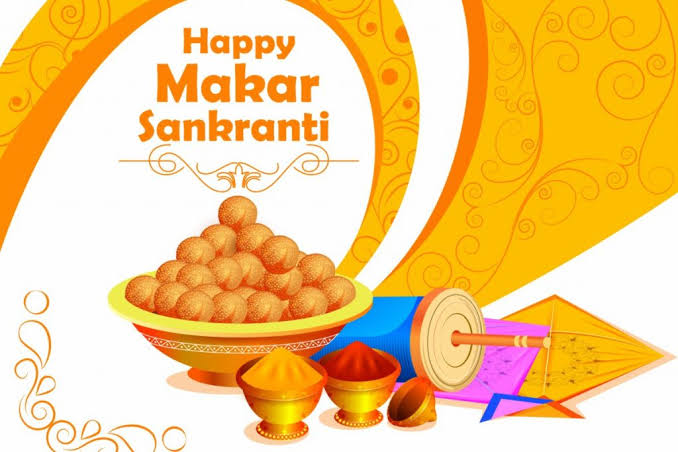
☀Why we celebrate Makar Sankranti?☀
Makar Sankranti is a significant day as the Sun enters Makar Rashi (i.e. Capricorn zodiac) as per Vedic astrology. In Hinduism the Sun is worshipped and known as Surya Deva who nourishes all living beings on the Earth. The sun stands for knowledge, spiritual light and wisdom.
Although all twelve days in Hindu calendar when Surya Deva transits a rashi(zodiac) are considered significant for worshipping Surya Deva, taking religious bath in holy water bodies and performing charity activities but the day when Surya Deva starts moving into Makar Rashi is considered the most auspicious day of the year to worship Lord Surya.
☀Significance☀
Makar Sankranti signifies that we should turn away from the darkness of delusion in which we live and begin to joyously let the light within us shine bright. We should grow in purity, wisdom and knowledge just as the sun does from this day. Sun stands for all ideals; its message is that of light, unity, equality and true selflessness. These are the ideals of a karma yogi. Hence, the sun is the biggest karma yogi. It doesn't ask for any rewards for all that it gives us. If it stops giving light, we will be doomed. If we learn this one lesson from the sun, our lives will shine with the divine lustre.
📖 Mythological and Cultural Importance 📖
1. Surya visits his son Shani, on Sankranti day.
Lord Shani is the ruler of the planet Saturn as per the astrological parlance. He is described as the one who keeps a close watch of the sinful and good deeds performed by people and give the corresponding results in their consecutive births. Shani Dev is black in complexion and is born to Chaya Devi and Lord Surya Dev (Sun god). The story of Shani is quite interesting which also tell us of his incomparable powers just like his father.
Lord Surya married Sandhya and begot three children namely Vaivasvatah Manu, Yam (God of death) and Yamuna. Though Sandhya was a chaste and highly devoted wife to sun god, she could not bear the dazzling brilliance and heat of Surya. Therefore, she wished to undertake a penance to gain the necessary power to withstand the brilliance of sun or to overtake his brilliance with her own brilliance acquired as a result of her penance.
Sandhya created a woman namely Chhaya (the word meaning shadow) from her own shadow and asked her to represent her role as the wife of Sun and take care of the three children too. However, she did not want to reveal any of her plans to Sun God. Doing so,Sadnya handed over her responsibilities to Chaya and went away to her parents’ place.
She went home and told her father that she could not stand the radiance of God Surya. And therefore, without telling her husband she had come away. Listening to this, her father scolded her and told her that without being called, if the daughter returns home, both her and her father would be cursed. He told her to go back to her home immediately. Then, Saudnya began to worry that if she went back, what would happen to the responsibilities which she had given to Chaya? Also their secret would be exposed.
So,she went to the dense jungles in Uttar Kurukshetra and took repose there. She was fearful of her safety in the jungle because of her youthfulness and beauty, hence changed her form into that of a mare so that no one could recognize her and started her penance.
Since Chhaya resembled Sandhya very closely, Sun God could not doubt her. Three more children were born to Sun God through Chaya namely Manu, Shani and Tapti. Therefore, Shani is called the son of Surya and the brother of Yama.
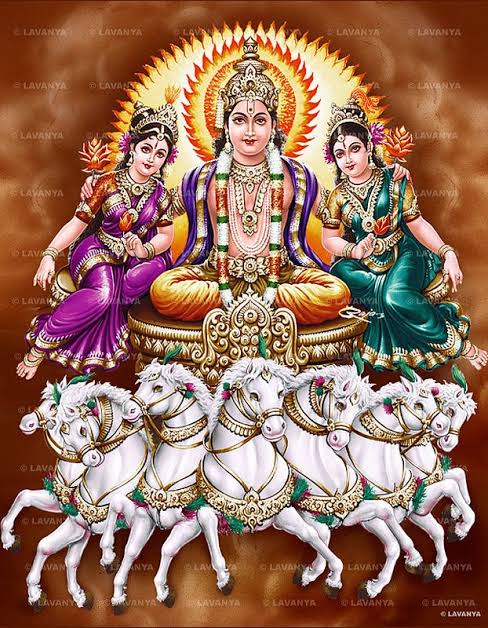
Surya Dev with wife Sandhya and Chhaya
As Shani was in the womb of Chaya, she undertook a severe penance under the dazzling sun to propitiate Lord Shiva. As she was totally immersed in prayers and worship of Lord Shiva, the divine vibrations were unconsciously nurturing the baby inside the womb. Therefore, Shani Dev was so much devoted to Lord Shiva too. Also, since Chaya did penance under the blazing sun for so long, Shani was growing black inside the womb. As Shani Dev was delivered, Sun god despised seeing the color of the boy and doubted whether Shani was born to him. This angered Shani Dev who casted an angry look at his father. Due to the power of Shani Dev, Surya too was scorched to black color and movement of his chariot's horses stopped.
Then Surya dev worshipped and called out to Lord Shiva who described him why Shani was so black. Knowing the truth behind the issue, Sun God realised his wrong & apologised. After that Surya dev regained back his glorious looks and power of his chariot's horses.
So, right from his birth, there was a severe misunderstanding between Sun god and Shani, and they didn't go along well. But on Makar Sankranti, leaving all enmity behind, Surya dev visits Lord Shani's 2nd house I.e. Makar(Capricorn). Also Shani dev welcomes him forgetting their bitter past.

Sun god on his chariot
✒According to another story, once Surya dev witnessed Chhaya doing impartiality with her step son Yama, hence he deserted both his wife Chhaya and his son Shani, which made Shani angered and he cursed his father to suffer from leprosy. Looking at his father's state, Yama dev got saddened and did penance to cure him. After getting cured, Sun God in anger burnt Lord Shani's house, 'Kumbh', which increased Shani dev and his mother's sufferings. When Yam saw his step mother and step brother's condition, he went to his father & requested to end their sufferings. Finally after listening to Yama, Surya dev went to Shani's house, 'Kumbh'. Shani Dev had nothing to welcome him other than Black Til (seaseme seeds) as everything got burnt. So he welcomed him by doing Pooja with that Black Til only, impressed by his act, Sun God blessed him saying that his visit to Shani's second house 'Makar' would filled it with wealth. It is believed that because of Til, Lord Shani got his grandeur back. Hence Til is offered to both Sun God and Lord Shani during Pooja on Makar Sankranti.
2. Ganga coming down on earth & Liberation of Bhagirath's ancestors
The great savior of his ancestors, Maharaj Bhagirath, did great Tapasya to bring Gangaji down on the earth for the redemption of 60,000 sons of Maharaj Sagar, who were burnt to ashes at the Kapil Muni Ashram, near the present day Ganga Sagar. It was on this day that Bhagirath finally did tarpan with the Ganges water for his unfortunate ancestors and thereby liberated them from the curse. Thus Makarsankranti marks the start of good luck and fortune for all endevours.
From then on, Ganga Sagar has been a holy pilgrimage in Bengal. A dip in the water at the junction of the river and sea (Prayag) is consider to be auspicious. It is believed on this day, who takes bath in Ganga is freed from all his sins. Although on this day bathing of women has been forbidden.
Big celebrations are made on this day as Ganga sagar mela in west bengal. Sage Kapil ashram attracts lot of visitors on this auspicious day.

Sage Kapil ashram – Gangasagar
3. Importance of Uttarayan
✒In the eight chapter of Gita, the importance of Uttarayan of the Sun is clarified by Shri Krishna. According to it, the person who leaves his body in light does not take birth again while the person who dies in darkness takes birth again.
Here, light and darkness means Uttarayan & Dakshinayan of the Sun respectively.
✒Bhishma knew the importance of Uttarayan and had the boon of Ichchha Mrityu. Hence even after being laid down on bed of arrows he refused to give away his life and waited for this auspicious day to depart from earth.

Bhishma leaving his body in presence of Shri Krishna on the day of Makar Sankranti
✒Importance of Uttarayan is also mentioned in Chandogya Upanishad
4. Lord Vishnu triumphed over the demons.
The sacred story says that on this day Lord Vishnu beheaded the demons and buried under the Mandara Parvat. Thus, it symbolizes the end of negativity and evil in life and the beginning of an era of righteous living.

Lord Vishnu killing the demons
5. Yashoda Maiyya's Fasting
Yashoda Maa fasted to get Lord Vishnu as her son and Lord Vishnu fulfilled his wish by taking an avatar of Shri Krishna.
6. Worship of animals during Makar Sankranti.
One day, Lord Shiva asked his bull Nandi to go to the earth and deliver a message to the disciples. The message was to "have an oil bath everyday and food once a month." However, poor Nandi got confused with the message and told the worshippers that Lord Shiva had asked them to "have an oil bath once a month, and food everyday." When Shiva learnt of this, he was enraged and ordered Nandi to stay back on earth and help the poor farmers to plough the fields, since they would now need to produce more grains in order to be able to eat every day.
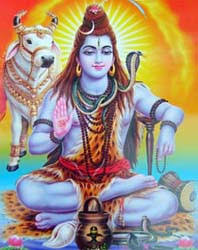
Lord Shiva with Nandi Bull
That's all from my side. Enjoy reading😊
Edited by kavya1994 - 3 years ago
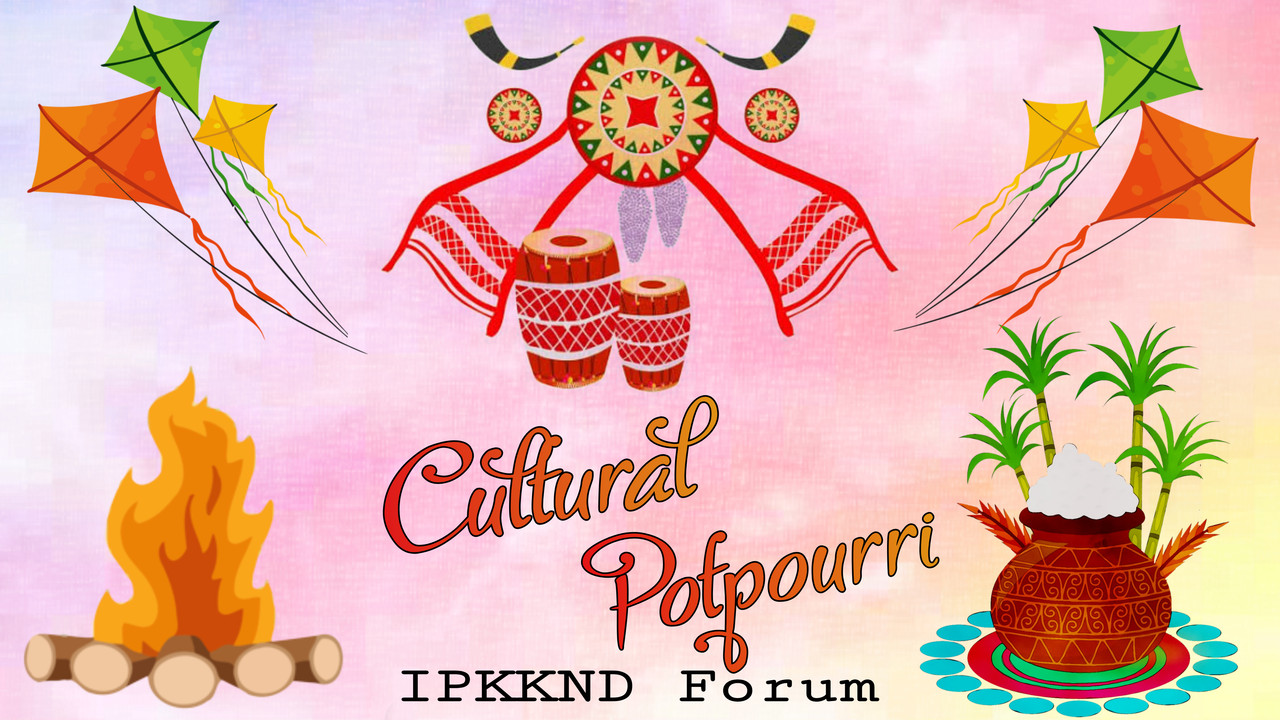






























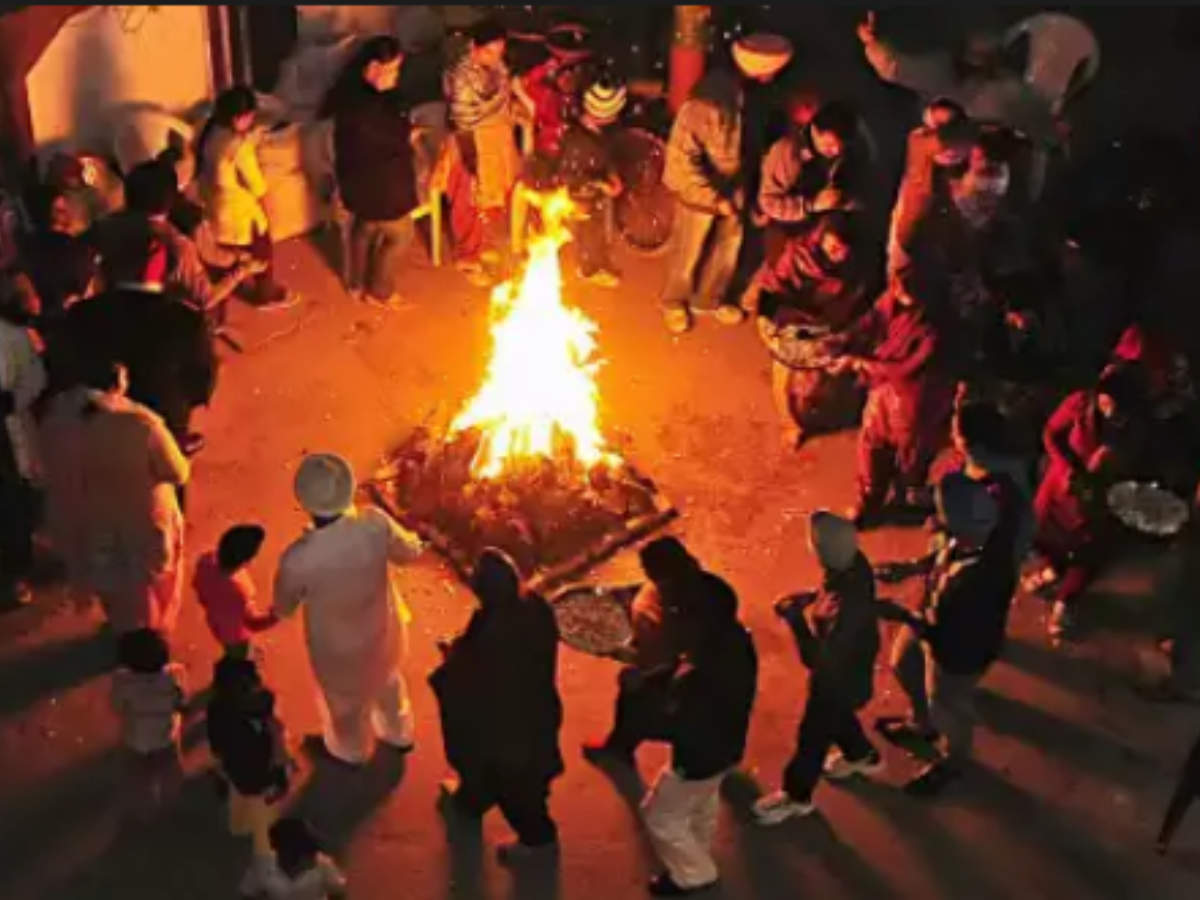
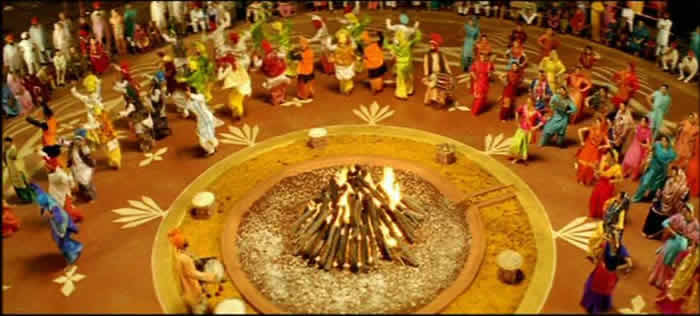


comment:
p_commentcount